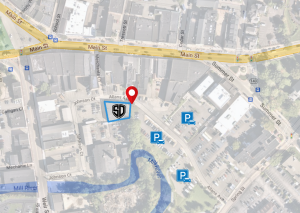Prioritize and Execute
Recently I’ve been reading the book “Extreme Ownership” written by Jocko Willink and Leif Babin. They talk about lessons they’ve learned in war and on the SEAL teams and how you can translate them into leadership and business. One of the points they bring up, “prioritize and execute” stood out to me. From a leadership standpoint, they speak about how to prioritize tasks and how to execute them under stressful situations. I can take those same points and apply them to workouts, more specifically the Open workouts.
Everyone has strengths and weaknesses when it comes to workouts. It could be the time domain, rep schemes, or the exercises themselves. We can break them down into an order of priority and we can create a plan that we’ll need to execute.
Time domains can range from 5 to 40 mins in a CrossFit Open WOD. The majority last between 10-15 minutes. In training, we attack many different time domains to see how you react to each. Do you fizzle out after 10 minutes? Can you continue forever at a steady pace? Or do you excel in fast sprint WODs? Those are a few questions we can reflect on after a WOD and then ask ourselves before a WOD.
Rep schemes are unlimited. From 1 rep maxes to 55 handstand push-ups towards the end of a chipper. How long will you be able to hold on? Would it be more beneficial to break the movement up in sets or go to muscle failure straight through?
The variety of movements we see in the Open can be somewhat predicted. We practice them throughout the year and hopefully something we’re proficient at shows up in a workout. Dave Castro controls this, so we must be ready at all times for whatever movements he throws at us. When we’re anxious awaiting the WOD announcement on a Thursday night everyone is usually crossing their fingers for movements in their wheelhouse, but that’s not always the outcome. So how can we get the best possible outcome from a workout that doesn’t cater to our strengths? Or a workout that is a strong movement coupled with a weakness?
First, we need to prioritize.
Let’s look at 17.4- AMRAP 13: 55 Deadlifts, 55 Wall Balls, 55 Cal Row, 55 HSPU. When we first look, we see high reps with a longer time domain. For me personally, right off the bat I know I’m not going to come out too fast. I also see the movements aren’t too technical until you get to the handstand push-ups. If I was to attack this workout, I’d prioritize getting to the handstand push-ups. I know getting handstand push-ups in a workout like this will separate my score from those that don’t have handstand push-ups. Deadlifts are not a strength for me at that high of reps, so I will break deadlifts up into manageable sets and focus on controlling my breathing. Then I will attack the wall balls with big sets and control my pace and breathing through the row. For me, with my strengths and weaknesses, it will be about getting in as many handstand push-ups as I can before the time cap. So, there it is, my plan for this workout.
Now that I have a plan, manageable sets and controlled breathing until I get to the HSPU then try to get as many HSPU in as possible before the time cap, it’s time to execute. 3,2,1, GO! With the music blaring and teammates cheering me on, it’s easy to stray from my plan. This will be the true test of my discipline. The deadlift monster next to me decides to push through 55 deadlifts as I break them up into sets. Someone is yelling “don’t stop now! Keep going! Pick that bar back up!” I cannot let this distract me. I set my priorities, I know my limits, and I have a strong plan. If I execute my plan correctly, I will make up time where I am stronger.
When you’re competing in the Open or in a local competition it’s important to prioritize and execute. By knowing your body, your strengths and weaknesses, and your goal, you can come up with the best plan for you. You can prioritize what you need to do and how you need to do it. After that it’ll be up to you to execute that plan and give it your all.




